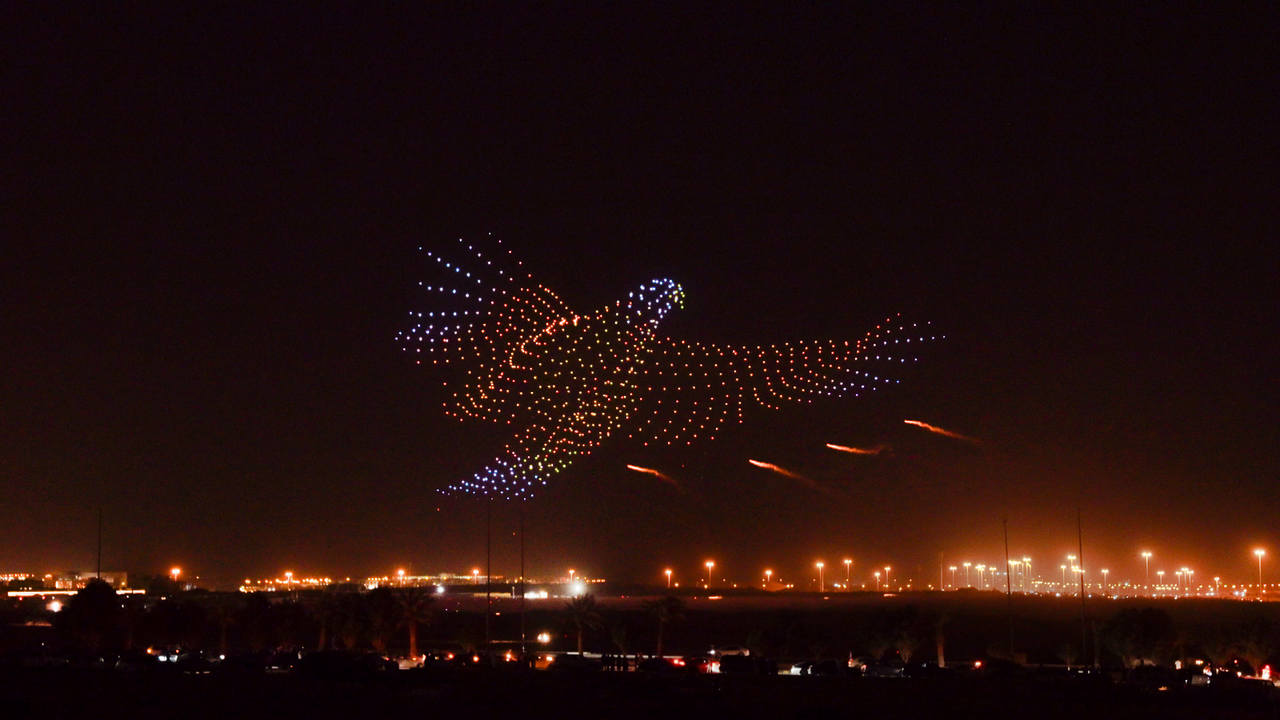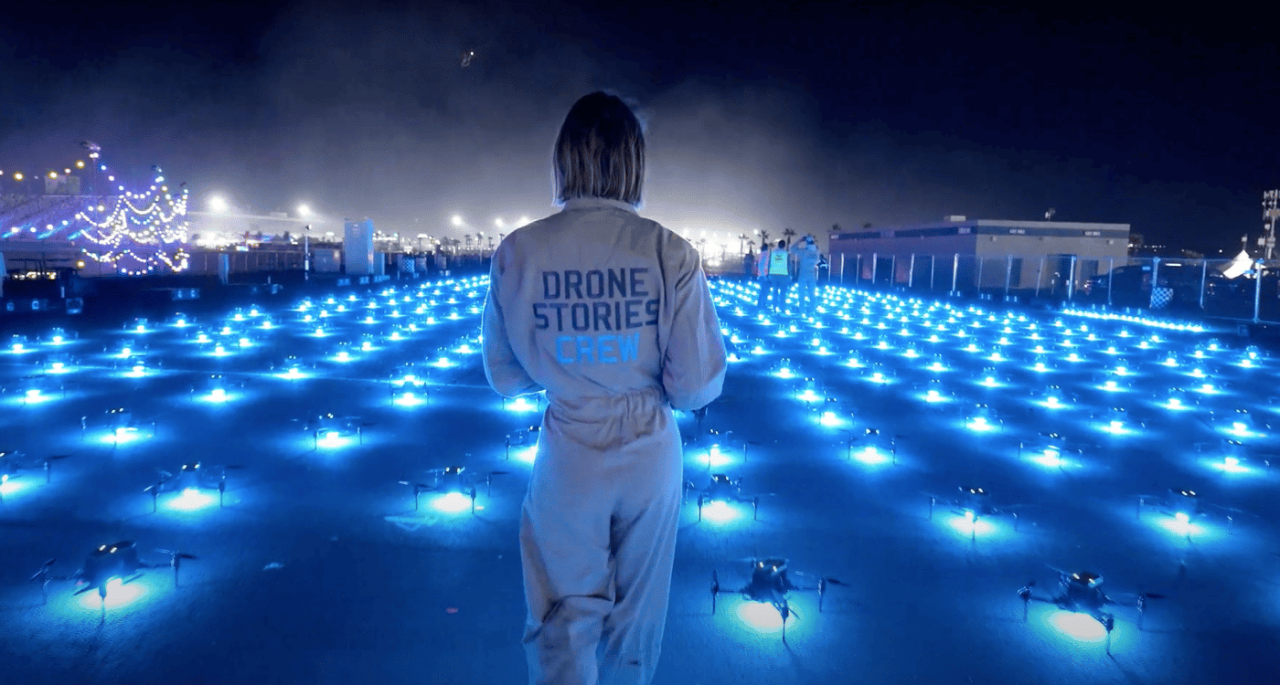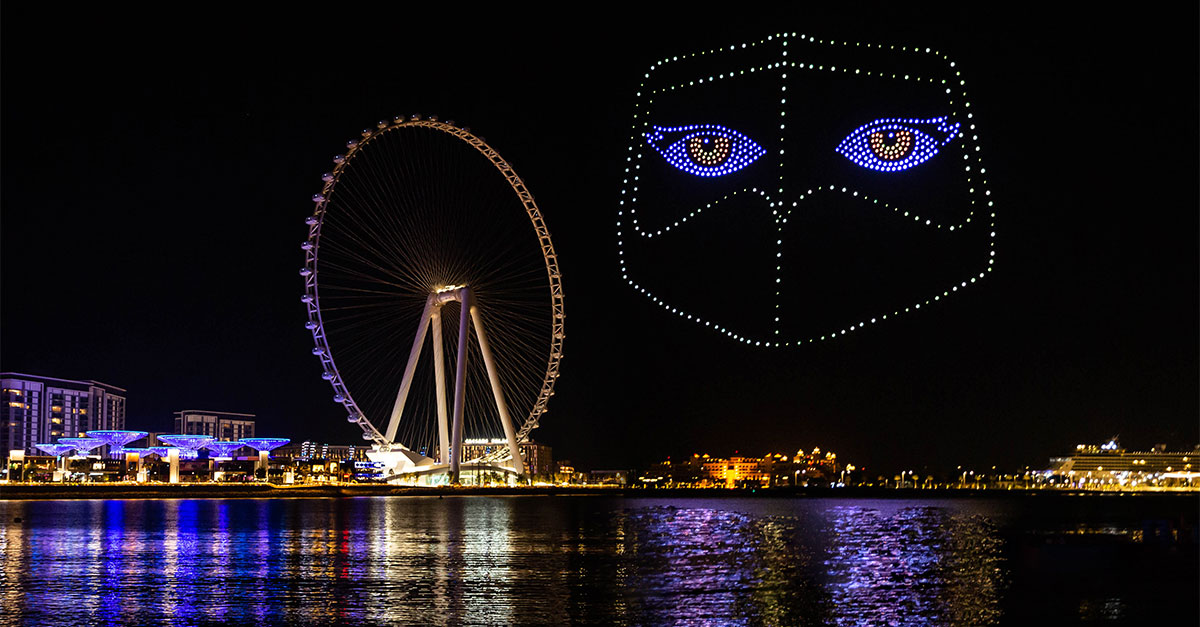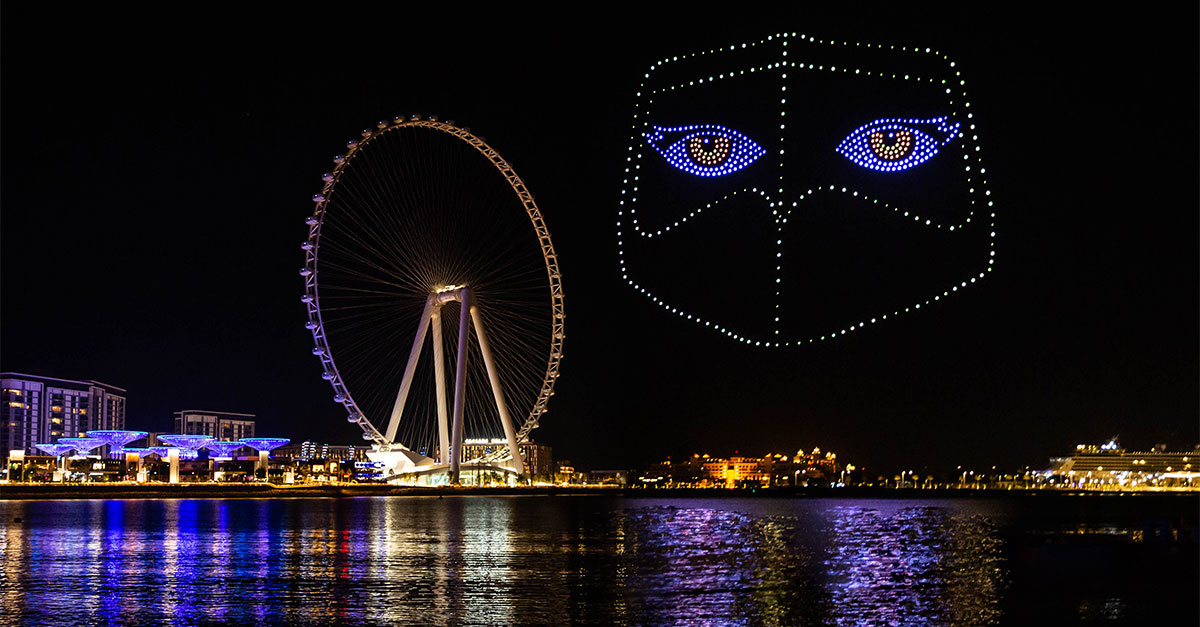Drone show: Imagine a breathtaking spectacle of hundreds of drones painting vibrant images across the night sky, synchronized to music and storytelling. This isn’t science fiction; it’s the rapidly evolving world of drone light shows, blending technology, artistry, and entertainment in spectacular ways. We’ll explore the technology behind these mesmerizing displays, the creative process of designing a show, the safety regulations involved, and the exciting business opportunities they present.
From
Drone shows are awesome, right? Imagine a massive, coordinated display of lights, creating incredible shapes and patterns in the night sky. Think of the possibilities – maybe even a recreation of a famous scene, like a drone-based interpretation of player 001 squid game season 6 , with each drone representing a player. The potential for storytelling and visual spectacle in drone shows is truly limitless!
the intricate programming and communication systems that control each drone’s movement to the creative choreography that brings stories to life, we’ll delve into every aspect of crafting a memorable drone show. We’ll also cover the practical considerations, such as obtaining necessary permits, mitigating safety risks, and marketing your show effectively. Get ready to take flight into the fascinating world of drone shows!
Drone Show Technology
Drone shows are a captivating spectacle of coordinated aerial displays, made possible by advancements in drone technology and sophisticated control systems. Understanding the technology behind these mesmerizing performances is crucial for appreciating their complexity and potential.
Types of Drones Used in Drone Shows

Various drone types are employed in drone shows, each with specific strengths. Quadcopters, with their four rotors, offer excellent stability and maneuverability, making them the most common choice. Larger, hexacopter or octocopter drones might be used for carrying heavier payloads, such as larger lights or specialized equipment. The choice depends on the scale and complexity of the show.
Software and Hardware for Successful Drone Shows
A successful drone show relies on a robust interplay of hardware and software. The hardware includes the drones themselves, a powerful ground control station (GCS) computer, high-bandwidth communication systems (often using 4G/5G or dedicated radio links), and potentially additional lighting or sensor equipment. The software encompasses flight control algorithms, show programming software (often custom-built), and communication protocols for coordinating the drones’ movements.
Real-time data processing is essential for adjusting to unforeseen circumstances.
Drone Show Communication Protocols
Reliable communication is paramount for a seamless drone show. Proprietary and open-source protocols are used, often employing radio frequency (RF) or cellular technologies. These protocols manage the transmission of flight commands, position data, and status updates between the GCS and each individual drone. Redundancy and error correction mechanisms are built in to ensure reliable communication even in challenging environments.
Drone shows are awesome, right? Those dazzling light displays in the night sky are actually super coordinated! To understand how these amazing spectacles come to life, check out this link explaining how do drone shows work. Basically, it involves precise programming and a whole lot of tiny, flying robots working together. The result? A truly unforgettable drone show experience.
Comparison of Drone Show Control Systems
Different control systems offer varying levels of sophistication and scalability. Some systems rely on centralized control, where a single GCS manages all drones. Others use decentralized or hybrid approaches, distributing control tasks for improved resilience. Factors like the number of drones, show complexity, and budget influence the choice of control system.
Flowchart for Programming a Drone Show Sequence
Programming a drone show involves a multi-step process. A flowchart would visually represent this process. It would begin with defining the show’s theme and duration, followed by creating the choreography (defining drone positions and movements over time). This then moves to translating the choreography into commands for the drones, simulating the sequence, refining the timing and movements based on the simulation, and finally, deploying the show.
Error handling and contingency planning are integrated throughout.
Drone Show Design and Choreography

Designing a captivating drone show requires artistic vision, technical expertise, and meticulous planning. The choreography, lighting, music, and venue all play crucial roles in creating a memorable experience.
Sample Choreography: A 5-Minute Nature-Themed Show
This example illustrates a 5-minute nature-themed drone show. The drones, each equipped with customizable LED lights, would depict various natural elements.
- 0:00-1:00: Sunrise: Drones form a rising sun, with gradually brightening orange and yellow lights.
- 1:00-2:00: Forest: Drones create a dense forest scene with green and brown lights, shifting formations to simulate wind.
- 2:00-3:00: Ocean: Drones morph into waves, using blue and white lights to simulate water movement.
- 3:00-4:00: Mountains: Drones form majestic mountain peaks, using varying shades of grey and white lights.
- 4:00-5:00: Night Sky: Drones transition into a starry night sky, with twinkling lights representing stars and a large moon.
Factors to Consider When Designing for a Venue
Venue characteristics significantly impact drone show design. Size, lighting conditions (ambient light levels and potential light pollution), audience capacity and viewing angles all need careful consideration. Safety regulations and airspace restrictions specific to the venue also play a crucial role.
Innovative Visual Effects Achievable with Drone Shows
Drone shows are capable of creating stunning visual effects. 3D formations, dynamic transitions, realistic representations of objects and scenes, and even interactive elements are possible. The use of varying light colors and intensities enhances the depth and detail of the visuals.
Visual Impact of Different Drone Formations
| Formation | Description | Visual Impact | Suitability |
|---|---|---|---|
| Line | Drones arranged in a straight line | Simple, elegant | Transitions, text displays |
| Grid | Drones arranged in a grid pattern | Structured, geometric | Complex images, patterns |
| Circle | Drones arranged in a circle | Dynamic, flowing | Transitions, symbolic shapes |
| 3D Shapes | Drones forming three-dimensional shapes | Complex, impressive | Show centerpieces, iconic imagery |
Lighting and Music Enhancement
Synchronized lighting and music significantly enhance the storytelling and emotional impact of a drone show. The lights can change color and intensity to match the music and mood, creating a cohesive and immersive experience for the audience. Careful selection of music complements the visuals and reinforces the show’s theme.
Drone Show Safety and Regulations
Safety and regulatory compliance are paramount in drone show operations. Mitigating risks and adhering to regulations ensure the safety of both the audience and the drone operators.
Potential Safety Hazards and Mitigation Strategies
Potential hazards include drone malfunctions, communication failures, collisions, and unexpected weather conditions. Mitigation strategies involve using redundant systems, conducting thorough pre-flight checks, implementing robust communication protocols, and having contingency plans for various scenarios, including weather-related delays or cancellations. Operator training and adherence to safety protocols are critical.
Permits and Licenses for Drone Shows
Organizing a drone show requires obtaining necessary permits and licenses from relevant aviation authorities and local government agencies. These vary depending on the location, the number of drones, the show’s complexity, and the airspace involved. Failure to obtain the necessary permits can result in legal penalties.
Impact of Weather Conditions and Contingency Plans

Adverse weather conditions such as strong winds, rain, or fog can severely impact drone show operations. Contingency plans should include alternative dates, indoor venues (if available), and clear protocols for postponing or cancelling the show based on real-time weather data. Weather monitoring and communication with meteorological services are essential.
Comparison of Safety Regulations Across Regions
Drone show regulations differ across countries and regions. Some regions have established specific guidelines for drone shows, while others rely on broader drone regulations. Understanding these differences is crucial for international drone show operations. Compliance with local regulations is mandatory.
Checklist of Safety Protocols
A comprehensive safety checklist is essential. It should cover pre-flight inspections (drone condition, battery levels, communication systems), during-flight monitoring (drone positions, communication stability, weather conditions), and post-flight procedures (drone recovery, data analysis, equipment maintenance). Regular safety briefings for operators are also vital.
The Business of Drone Shows
The drone show industry presents unique business opportunities. Success requires a blend of technical expertise, creative vision, and sound business practices.
Successful Business Models for Drone Show Companies
Successful business models range from providing standalone drone shows to offering integrated event services that include drone shows as a key component. Some companies specialize in particular niches, such as corporate events or large-scale public spectacles. Partnerships with event organizers and marketing agencies are also common.
Pricing Strategies for Drone Show Services
Pricing strategies vary depending on factors such as show duration, complexity (number of drones, choreography sophistication), location, and required logistical support. Value-based pricing, considering the overall impact and experience provided, is often used. Packages with different levels of service and features are also common.
Marketing and Advertising Techniques

Marketing involves showcasing the visual spectacle through high-quality videos and photos on social media, creating a website with show reels, and leveraging public relations to generate media coverage. Targeting specific event organizers and corporations is essential. Building a strong online presence is key.
Step-by-Step Guide to Starting a Drone Show Business
Starting a drone show business involves several steps: developing a business plan, securing funding, acquiring necessary equipment and software, obtaining permits and licenses, assembling a skilled team, creating a portfolio of show examples, and establishing marketing and sales strategies. Building a strong network within the industry is also important.
Sample Marketing Brochure
A sample marketing brochure would highlight the company’s capabilities, showcase past projects with stunning visuals, and detail various show packages with their respective pricing and features. Testimonials from satisfied clients would also enhance credibility.
Drone Show Applications Beyond Entertainment
Beyond entertainment, drone shows offer diverse applications across various sectors, showcasing their versatility and potential for innovation.
Drone Shows for Advertising and Branding
Drone shows provide a unique and memorable platform for advertising and branding. They can create spectacular visual displays at product launches, corporate events, or public gatherings, capturing attention and enhancing brand recognition. Customizable formations and lighting allow for targeted messaging.
Applications in Special Events
Drone shows enhance special events like weddings, corporate galas, and festivals. They offer personalized visual elements tailored to the event theme, creating a stunning backdrop or integrated narrative. The spectacle adds a unique and memorable touch.
Immersive Experiences at Theme Parks and Attractions
Drone shows can be integrated into theme park experiences, creating immersive and interactive elements within larger attractions. They can add a dynamic visual layer to existing shows or create entirely new, captivating experiences.
Cost-Effectiveness Compared to Traditional Entertainment
The cost-effectiveness of drone shows compared to traditional forms of entertainment depends on several factors, including the scale and complexity of the show, the venue, and the desired level of visual impact. While the initial investment might be significant, the visual impact and potential for repeated use can make it a cost-effective choice in the long run, especially for large-scale events.
Contribution to Artistic Expression and Cultural Events
Drone shows offer a novel medium for artistic expression and cultural events. They can create dynamic visual representations of art pieces, historical events, or cultural narratives. Choreographers and artists can use drones to express creative ideas in a visually stunning and impactful way.
Final Conclusion
Drone shows are more than just impressive displays of technology; they represent a new frontier in entertainment, advertising, and artistic expression. The ability to create dynamic, three-dimensional visuals in the sky opens up endless possibilities for creative storytelling and immersive experiences. As the technology continues to advance and regulations evolve, we can expect even more spectacular and innovative drone shows to captivate audiences worldwide.
The future is bright, literally, for this rapidly growing industry.
Drone shows are amazing, right? Imagine the possibilities – a breathtaking spectacle of coordinated light and movement. Think of the scale they could achieve, maybe even recreating a scene from a popular show like squid game season 2 episode 9 , with hundreds of drones forming the iconic game set. The potential for creative storytelling with drone technology is seriously mind-blowing, leading to even more impressive displays in the future.
Questions and Answers
How much does a drone show cost?
Costs vary widely depending on factors like the number of drones, show duration, complexity of choreography, and location. Expect a significant investment, but the visual impact often justifies the expense.
What’s the battery life of drones used in shows?
Drone battery life is a critical factor. Shows typically use drones with sufficient battery capacity for the entire performance, with backup drones readily available.
How are drones prevented from colliding?
Sophisticated software and GPS systems ensure precise positioning and prevent collisions. Redundant systems and safety protocols are in place to handle any unexpected issues.
Can drone shows be done in all weather conditions?
No. Wind, rain, and low visibility significantly impact drone show safety and feasibility. Contingency plans and weather monitoring are crucial.
